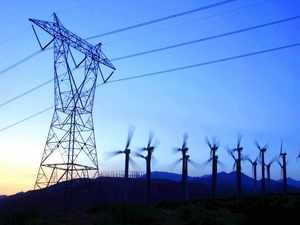 AFP
AFPJust as citizens started switching lights back on, power consumption started rising. Power minister, RK Singh, tweeted: “Demand in the grid came down by 32000 MW within a few minutes but the frequency and voltage were maintained within the normal range. Demand went down from 1,17,300 Megawatts at 20:49 hrs to 85300 Megawatts till 21:09 hrs; Then it started increasing. Frequency was maintained within a band of 49.7 to 50. 26 Hz, which means the voltage was kept stable.”
“The national grid operator POSOCO and the national, regional and state load despatch centres did a great job with support from all generators; NHPC, NEEPCO, THDC, SJVNL, BBMB, NTPC, all state gencos and IPPs, transcos and distribution companies and their officers and staff. Congratulations to all of you. The national power system works as a team. India stands together with the Prime Minister,” he said in his tweet.
Almost 26 GW demand dropped between 9 PM and 9.10 PM on Sunday. Around 16.6 GW of power demand dropped between 9 PM and 9.05 PM. In the next five minutes another 9 GW power demand dropped, taking the total fall between 9 PM and 9.10 PM to almost 26 GW.
The national power grid was prepared for the fall in demand and has been gradually scaling down thermal power generation in steps since 7.30 PM. In tandem power generation from gas-based and hydel generation units were being scaled up to maintain the balance. At 9 PM hydel was generating around 23.9 GW which was scaled down to half within three minutes to 12.22 GW when overall demand dipped as lights were switched off. Hydel power generation has one of the highest flexibilities of scaling down and increasing generation within a short time and the grid management authorities took advantage of flexibility. Renewable power generation were also scaled down by half by 9.10 PM.
As demand started to rise, thermal, hydel and gas-based generation was gradually scaled up for meeting the rise in demand. While thermal was being scaled up at a slow pace, hydel and gas-based power generation was rapidly increased to maintain grid balance. At 9 PM demand was 114,456 MW which declined to 97,798 MW in about five mines. In the next ten minutes it touched 88,759 MW after which it started to rise and was 111,040 MW at around 9.40.
Read More News on
Download The Economic Times News App to get Daily Market Updates & Live Business News.
Read More News on
Download The Economic Times News App to get Daily Market Updates & Live Business News.









 Get Unlimited Access to The Economic Times
Get Unlimited Access to The Economic Times
